Clik here to view.

Image may be NSFW.
Clik here to view.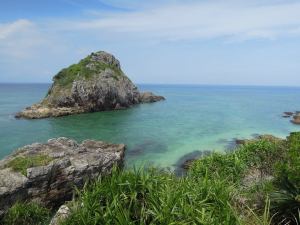
It feels like a long time since I was in Malaysia and Singapore in February and I almost feel like I’ve forgotten to write a blog post since then. The last few months have been tough for a variety of reasons, bereavement, break-ups and contractual issues at work (I’ve re-signed for what will be a final six months in South Korea) and since I booked my flight tickets six weeks ago I have eagerly been looking forward to just getting away from it all.
After some deliberation I decided to keep the flight cost down, keeping in mind my plans for 2015, and I booked myself 12 days in Okinawa prefecture at the very tip of southern Japan. When people think of Japan I would venture they mostly imagine the snow-capped peak of Mt. Fuji, the quirkiness and blade-runneresque Tokyo streets or the composure of the Buddhist temples in Kyoto. In all honestly when I lived in England this was my distant assumption, too. When you sit down with an atlas (or Google Maps…) you quickly realise how expansive Japan is, so expansive that Japan, sitting upon the Pacific Ring of Fire, is made up of innumerous islands. (6,852, thanks Wikipedia). This sprawling archipelago therefore has distinct topographical and cultural variations, which to a traveler looking to stay close to home (my Korean home), gives you a multitude of options. With it being summer the snowboarding peaks of Hokkaido and the snow monkeys of Jigokudani would have to wait for another day and I entertained the idea of exploring the isolated Okinawan Pacific Islands to the south.
Okinawa-honto:
My journey began with a flight to Tokyo and a nap waiting for my connecting flight to Naha in Tokyo’s rapidly aging Narita airport. A bumpy flight over typhoon Halong followed. In Naha I took the monorail to a centrally based downtown guesthouse.I arrived quite late and pretty much checked-in and passed out.
Image may be NSFW.
Clik here to view.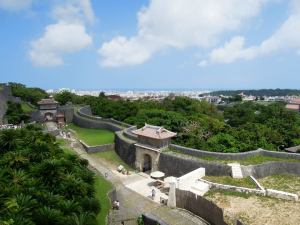
On my first full day in Naha I got up reasonably early and set off to one of the most important historical focal points on the main island. Shuri Castle sits atop a hill on the northern outskirts of central Naha. Since the mid-1300’s there has been a castle there and for 450 years it served as the administrative centre of the Ryukyu Kingdom before being seceded to the Satsumas (not the fruit) and then being annexed by the Japanese. It was almost completely destroyed by the Americans during World War II as the Japanese military set-up their headquarters beneath it. What stands today is a reproduction of the castle based on photos and memories, nonetheless the castle walls shield an impressive burnt-red wooden structure that stands out amongst the surrounding rolling whitewashed concrete urban sprawl. From the monorail I walked down in the searing heat and humidity following the outline of the castle walls to the entrance gate. A reasonable entry fee (Okinawa is significantly cheaper than the other areas of Japan that I have previously visited) allows you access to the castle buildings and gardens that provide a good view across the city surroundings. The Ryukyu kings seemed to have had a pretty sweet deal, entertaining their trading partners from China in simple tatami floored rooms looking out over miniature landscaped gardens and ruling from the elegantly simple throne room. Outside the main castle there are some gates which the significance has since been lost to me but provided some nice photos and there are some mausoleum tombs and ponds to walk around.
Image may be NSFW.
Clik here to view.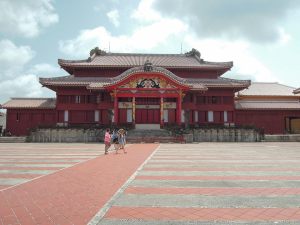
Image may be NSFW.
Clik here to view.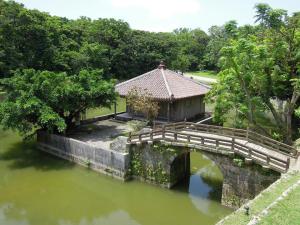
From Shuri I returned to the downtown area and got my bearings by walking around some of the main shopping streets. To experience true Naha you first need to get away from the garish Kokusai Street lined with endless tourist shops and over-priced dining offerings and head to the streets that splinter off it where you can find quirky eateries and bars, this is especially the case along the area that is sandwiched between Kokusai Street and the monorail (Kumoji District). Another good area that I wandered upon was along Ushikima, definitely worth checking out for its vintage clothes shops, cafes and bars. Considering I was burning up by this point in the afternoon sun I bought myself a cap and literally found a cafe to chill-out in.
Image may be NSFW.
Clik here to view.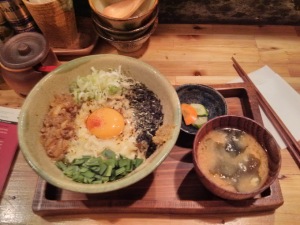
In the evening I had some amazing noodles in a friendly eatery called Mazemen. The two owners, a young couple seemed delighted to see me and I pleasured them with a couple of return visits during my stay. Cheap and delicious. I checked out the ferry times for some ill-fated trips to the Kerama Islands (more on that later) and had a mango smoothie in a coffee shop. Unlike Korea none of the locals were on their smartphones, but rather reading which I found nicely refreshing and a common theme across the islands I visited. It would appear the Japanese love a good book.
My second day began in faltering fashion as I enjoyed a lie-in under the presumption that the bus schedule to Churaumi Aquarium was a little more frequent than it turned out to be. After twiddling my thumbs on Naha’s streets for a few hours I then endured a two hour bus journey to the aquarium on the north-west coast. I say endured because after one hour the air-conditioning on-board packed up. I was beginning to understand why a large proportion of the population walk around with a hand towel either draped across their shoulders, wrapped around their heads (this is definitely a fashion accessory for young men) or easy to hand in their bags. After exiting the sweaty bus it was already early to mid-afternoon and with the last bus running back to Naha I had to rush down to the aquarium.
Image may be NSFW.
Clik here to view.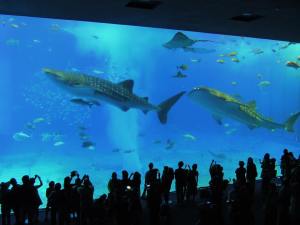
Churaumi Aquarium was previously the largest in the world and I guess if I was ever going to go to one it wasn’t a bad place to start, although my experience of zoos has never been a particularly positive one. The main attraction here is the whale sharks and they can be found in the main tank along with a wide selection of rays and other large fish. As I worked my way round the tropical reef fish I arrived at the main show, the 7,500 cubic metre tank. Although it is big, I’m sure the whale sharks probably felt it wasn’t big enough. I happened to arrive as their feeding time was held and they gulped down big buckets of krill that were spilt into the tank. The rest of the time they circled around giving the odd small child a fright as they glued their faces to the thick glass aquarium windows.
Across from the main tank was the ‘dangerous’ shark tank. A tiger shark a few bull sharks and some others that I could not name aimlessly swam around. It looked pretty dull and if they weren’t man-eaters before they must be seriously considering the decision to become one. the tiger shark looked especially pissed-off as it swam clockwise with its nose glued to the surface and tank wall. Outside the manatees and turtles fared much worse, crammed into tiny pools that would only suffice as a toddlers play pool at your local community pool.
A dolphin show was on and a rather black and angry looking dolphin (it looked almost like a killer whale) splashed half-gleeful, half-terrified children who had been made to gather at the base of the tank windows by some either cynical or guilty parents.
My time was up and although I had seen some pretty amazing animals it was a bitter achievement in my mind and I decided it didn’t really count unless I was lucky enough to one day encounter them in the ocean.
I managed to have no more bus mishaps and headed back to Naha, showered and headed out to enjoy a walk around the backstreets of Sazaruka and Tsuboya. The highlight of my evening walk being an encounter with a man who had set up a projector in a back alley and was enjoying his own outdoor cinema viewing of Raging Bull on his or possibly a neighbours house.
Ishigaki-jima:
The next morning at breakfast I had the misfortune to meet the most beautiful girl I may have ever encountered just as I was checking out and heading to the airport. Such is life (or just my life?)… Anyway little was I to know the joys that Ishigaki Island, my next destination, would hold for me. After an hours flying time I arrived in the Yaeyama Islands the most southern points of Japan and landed at Ishigaki airport and took a local bus to Shiraho Friends House in Shiraho village.
On arrival I met the friendly owner Hiro who helps his guests out enormously by giving them expert insider information about the island and some of the trips you can take and the sights you can see. I had some time in the afternoon to check out the main town and look at some of the ferry schedules to the local islands. I ate a small dinner at a local izikaya and then sat on the roof of the hostel with beer admiring the crystal clear sky and the stars that you can so rarely see through the hazy city skies of Busan. The view of the stars was only obscured by the odd giant fruit bat that swooped through my eye line and then some clouds that eventually rolled in to obscure an apparent meteor shower that was expected around midnight.
Image may be NSFW.
Clik here to view.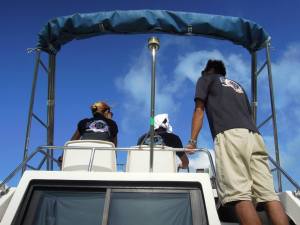
I woke early as I was joining a snorkeling trip with some of the other guests who were staying at the guesthouse. At around 08:30 Robyn, Stefan, Misato and myself were picked up by the snorkeling company staff Nao and Hazu (Jiyujin) and after a few of my new friends grabbed some wet-suits we headed to the harbour and jumped on the boat with the captain Yama-chan. The plan was to sail the boat to the very remote Kuroshima and Panari islands but because of some dark skies and rough seas we had to make do with a plan to snorkel around Taketomi Island.
Image may be NSFW.
Clik here to view.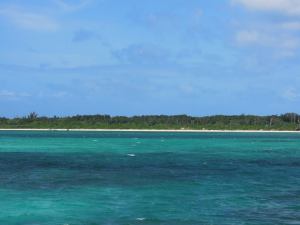
Image may be NSFW.
Clik here to view.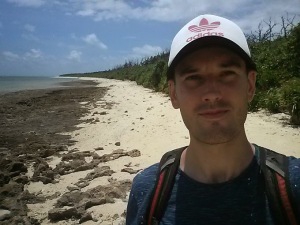
We spent the morning snorkeling around the abundant coral reefs encountering some exotic fish before having lunch on the island. We had some time after lunch so I took a walk along the virtually endless beach that encompasses the island. After my walk and everyone’s lunch having settled we hit two more reef spots.
Image may be NSFW.
Clik here to view.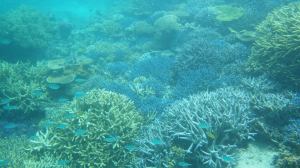
Image may be NSFW.
Clik here to view.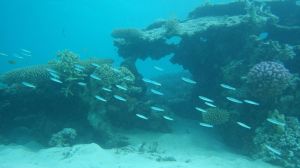
Image may be NSFW.
Clik here to view.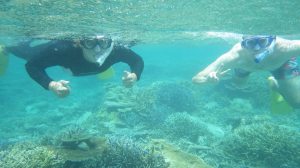
After the first one I half-jokingly suggested I wanted to see a shark and so our final spot was to be in some deeper but equally crystal clear waters. Be careful what you wish for. As we laid anchor and tied up to another companies boats their guides spotted a shark but I didn’t have my mask and flippers on yet so I didn’t manage to see the shark… Nonetheless the deep waters were incredible, the receding tide brought the coral perilously close to you (I already had cut my foot open on some coral in the morning after taking a swim sans flippers) and the coral reef raised an incredible height from the seafloor making it more exciting to dive down and work your way alongside the fish and coral rather than looking down upon them. We had a waterproof camera with us and the staff took some good shots of life on the reef for us.
Image may be NSFW.
Clik here to view.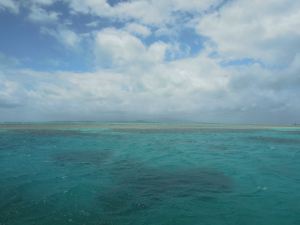
Image may be NSFW.
Clik here to view.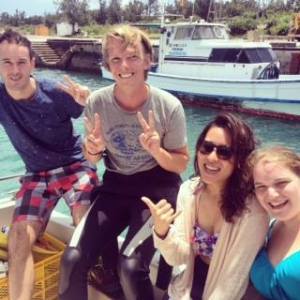
Image may be NSFW.
Clik here to view.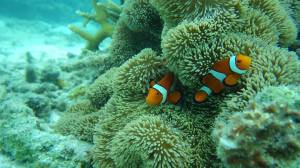
The whole day, bar the stinging sunburn I got on my shoulder blades and my coral slashed foot, was fantastic. A great day spent with good people, this was enhanced even further as Nao invited us out to dinner with the dive team and his Hawaiian girlfriend. We planned to go to a popular yakinikuk restaurant, (like a refined Korean barbecue joint) but they were full, instead we went to another one that I can only imagine was equally as good. It was great to get to know Nao and Hazu a little better and we enjoyed plenty of delicious meats and alcohol including the local awamori liqeur. Yama-chan spoke little English but was making up for this with his ability to keep mine and particularly Stefan’s, whose last night in Ishigaki was today, glasses of awamori and iced water full. Hazu was very talkative and the others described her as being a typical Japanese genki girl which I have decided must be a quite endearing feature. Nao was quite the conversationalist and has a vibrant personality. I was beginning to feel that living in these islands was so enjoyable it would be difficult for anyone to have a negative personality trait. The evening gradually drew to a close and we headed back to the guesthouse.
Image may be NSFW.
Clik here to view.
The following day Misato and I took a trip to the neighbouring island of Iriomote. We took an inexpensive high-speed ferry from Ishigaki that included a free multi-use bus ticket around Iriomote. We planned to take the Urauchi river boat tour and then hike into the jungle to see some of the waterfalls. The river tour began slightly upstream from the river mouth at the edge of the mangroves. Our boat was virtually empty so we had space to move around and look at the sights on both sides. The tour was narrated in Japanese but I had been given an English translation paper where I read that tiger sharks like to swim up the river to feed on the abundantly rich river waters. Swimming was immediately vetoed.
Image may be NSFW.
Clik here to view.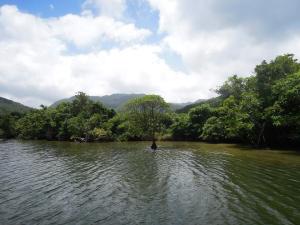
Image may be NSFW.
Clik here to view.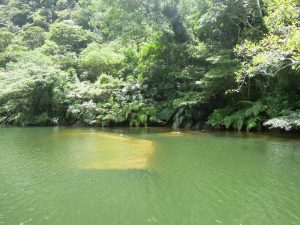
The tour was scenic and as the river narrowed and the elevation of the treetops increased we came to the docking point. The water changed from an ominously tranquil murky brown to clear water tumbling between rocks. From here we hiked up a semi-cleared jungle path to a viewing point for the Kanbire waterfall, after taking a few pictures from distance we continued following the path upriver to another section of cascading waterfall. Our time was up, it had taken an hour to get here and we had to be back at the docking point in one hour. The trail was littered with lizards of all kinds and the odd frog and bird. Other things rustled in the undergrowth but it was impossible to see or react to the sounds quick enough with the slippery roots and mud beneath our feet. We definitely didn’t spy one of the elusive Iriomote wildcats, maybe if we missed the last boat and were stuck over night in the jungle we would have had a better chance…
Image may be NSFW.
Clik here to view.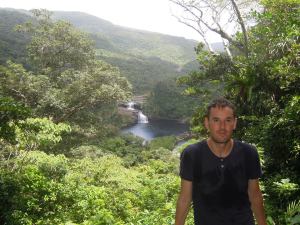
Image may be NSFW.
Clik here to view.
Image may be NSFW.
Clik here to view.
We grabbed the next bus that came along from the entrance to the river centre and headed to the ‘Star Sand’ beach, famous for tiny star shaped shells that can be found amongst the other grains of sand. We found a few and cooled off with a brief paddle in the rock-pools and admired the isolated rocks that had been left by coastal erosion. Time was drawing in on us and perfectly timed our arrival at the dock to catch the ferry. Back in Ishigaki we cooled off after being caught in the hot and stuffy rear end of the ferry by enjoying some salted ice-cream with hibiscus and wasabi sprinkles. Sounds odd but is also surprisingly delicious!
Image may be NSFW.
Clik here to view.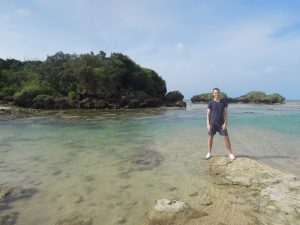
In the evening Misato and I joined Kayoko, a long-term Shiraho Friends House summer resident, at one of the local run restaurants and we tried some goat sashimi with ginger and garlic amongst some other dishes. We went back to the hostel and met up with some other guests from France, Japan and Germany and walked down to the beach to look at the stars in the night sky. Later in the evening when Kayoko and I were reading books on the roof terrace a small rat and a snake came tumbling out of the vines and faced off against each other amongst the outdoor slippers, not a great time to be stepping outside for anyone… The snake didn’t eat the rat as it ran away, but I managed to grab a quick picture of the snake as it slithered off before showing it to the hostel owner, despite being a young snake it turns out it was one of the greatly feared and aggressive ‘habu’ snakes that are responsible for numerous biting incidents every year and quite a few deaths (although not recently) throughout the Okinawan islands. Hiro suggested I could have tried to catch it as awamori producers would pay good money for a snake to place in the bottles during fermentation (in some shops you can even see the awamori being sold with a snake curled up inside). Feeling slightly nervous due to all the open doors in the hostel I watched where I was stepping on my way to bed.
Image may be NSFW.
Clik here to view.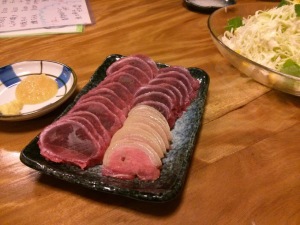
On my final day I hired a car for the day using my international drivers licence and took to a tour around Ishigaki. As always it was nice to be behind the wheel again as I don’t drive in Korea. I began my trip across the sugar cane farmland of central Ishigaki before arriving at Kabira Bay on the north coast. Kabira Bay is a tranquil richly coloured enclosed bay with a smattering of beaches dispersed by undergrowth topped volcanic rock cliffs. I took a walk along one beach and waded around the small cliffs to some of the others.
Image may be NSFW.
Clik here to view.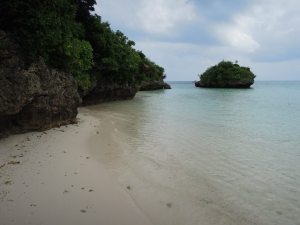
Image may be NSFW.
Clik here to view.
Image may be NSFW.
Clik here to view.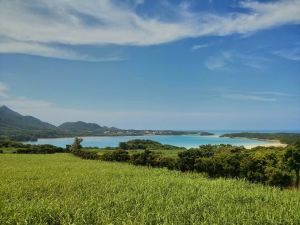
From Kabira I traveled to Kabiraishizaki a peninsular to the north-west and drove along some deserted roads stopping off wherever I saw a path going off into the undergrowth. By doing this I was able to reach some incredibly isolated and empty beaches and coves at the base of the jutting cliff tops. I spent a few hours basking in the solitude and sun on my own private beach.
Image may be NSFW.
Clik here to view.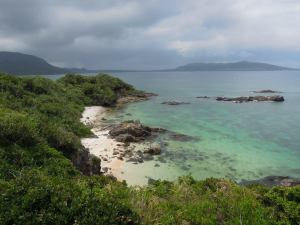
Image may be NSFW.
Clik here to view.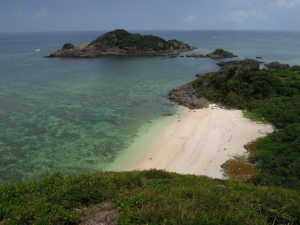
Image may be NSFW.
Clik here to view.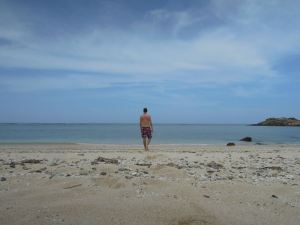
Image may be NSFW.
Clik here to view.
My next destination was the breathtaking views from Oganzaki, on the far western peninsula. I walked up to a lonesome brilliant white lighthouse and along the surrounding cliff area that overlooks the crystal clear waters and the outline of the coral reefs below. I took a few sketchy paths that were overgrown to reach some difficult to reach clifftop positions, apart from the uneven rocky surface beneath I was also a little concerned about last nights snake encounter and it wasn’t particularly comfortable putting my feet where I couldn’t see what laid below! The views were incredible, so I think the risk was worth it.
Image may be NSFW.
Clik here to view.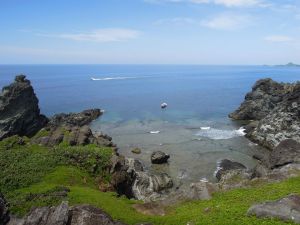
Image may be NSFW.
Clik here to view.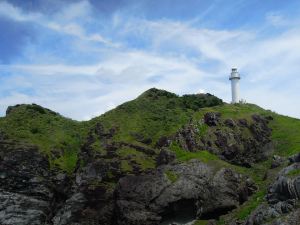
I headed east via a recommended juice shop where I had a tangy pineapple smoothie (pineapples being a popular local product) and a sad encounter with one off the local birds that flew across my path and disappeared up into the air above in a puff of feathers as it failed to avoid my bumper. I took a winding mountainous road through the national park before hiking to the summit of Nosokodake. From the top I was afforded some great cross island views in all directions.
Image may be NSFW.
Clik here to view.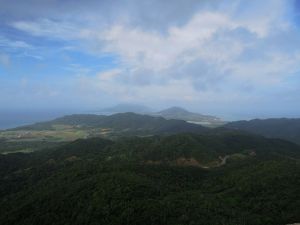
Back at hostel I had a quick shower and picked up Kayoko. I had promised to drive her north to a beach famous for dramatic sunsets after she had finished a Chinese class she was taking in the main town. We hoped to see a phenomenon called the green flash which can occur seconds after a sunset, despite mostly clear skies there were some clouds on the very far horizon and we just missed out on it.
Image may be NSFW.
Clik here to view.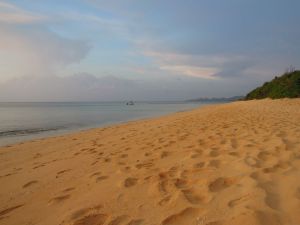
Image may be NSFW.
Clik here to view.
We headed back and walked along the unlit village roads to a different restaurant on the far outskirts of the village in hope of catching up with some other guests, but they were not there so we shared a dinner of pork and noodles with seaweed tempura and bacon, mushrooms and goya (bitter melon) together.
Image may be NSFW.
Clik here to view.
Image may be NSFW.
Clik here to view.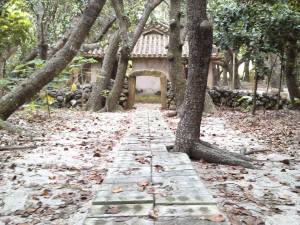
Image may be NSFW.
Clik here to view.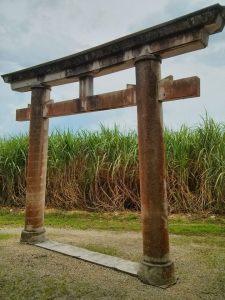
After one final night of stars on the roof terrace and a very local trip to an Okinawan shrine which Hiro suggested I see in the morning, I reluctantly headed to the airport. Ishigaki was an amazing adventure and an incredible place to visit and with the benefit of hindsight I wish I had stayed there for much longer during this particular trip. I was fortunate to meet some amazing people and I think if they read this they will understand that they helped make the experience unforgettable.
Okinawa-honto:
Back in Naha I had booked a cheapish hotel for the remainder of my holiday. While staying in hostels is great for meeting people, sharing a room with the odd snorer and the lack of privacy gets to me after a while, those who know me well know I love a bit of my own time. Feeling a bit wiped out from everything I had done over the last six days I took a day off and slept most of the afternoon following my check-in, I headed out in the evening and went to watch the return of the Premier League in a bar called Cafe de Camp Nou. This bar was something special in itself, Hiro (another Hiro) the owner was a fully commited football fan and had decorated the small bar with shirts and memorabilia from all over the world. In his broken English we had a conversation about the new season and I watched Swansea beat United and then Spurs scraped past West Ham much to my personal delight.
Image may be NSFW.
Clik here to view.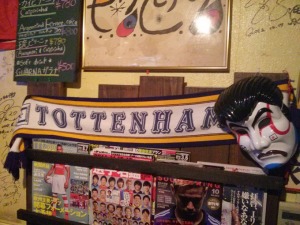
The next day was a rainy one and I enjoyed an extensive lie-in and read my Khaled Hosseini novel most of the day. In the late afternoon the rain eased off and I walked to the nearby Okinawan Prefectural Museum and Art Museum. I decided just to view the art museum on this day and save the Okinawan Prefectural Museum for another day. They had an exhibition of post-impressionist French painters, some photos from a local photographer (Taro Okamoto) who had documented the changes in Okinawan life since the 50s/60’s and some local Okinawan fine arts. In a prequel to another night of football at Cafe de Camp Nou I had dinner at an underground place called Afronest. This Jamaican place served me an incredible sizzling and fiery plate of Jamaican jerk chicken. All the staff (Japanese) had well manicured afros and the reggae music was tone perfect the rainy chilled day that I had experienced.
Image may be NSFW.
Clik here to view.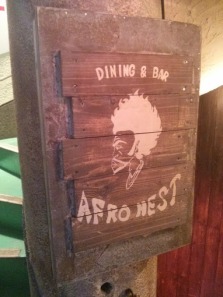
The next day began disastrously at Naha port where I discovered all the boat tickets to the Kerama Islands had been sold for the coming week and I wasn’t going to be able to do the island hopping that I hod hoped to do. Advance online bookings was the only way to go and I had literally and figuratively missed the boat. Instead I went to the bus stop at the front of Tomari Port and took a bus north to Yomitan. Zampa is famous for its beach and cape but neither impressed me, possibly because of the cloud in my mind about the ferry tickets I had missed out on. The beach was crowded and small; jetskis and banana boats zipped around so I walked to the cape. The lighthouse was under renovation and a gaggle of Chinese tourists greeted me on the sharp rock volcanic cliff-tops. Only a walk along the cliff edge and a little adventure down to some rocks below could appease my mind, I relaxed a little and then watched an amateur football game nearby. I walked back past the beach and discovered an adjacent beach to the main one, it was virtually deserted so I relaxed in the sun and felt a little better about everything. I walked through Yomitan village and visited the remaining walls of Zakimi Castle.
Image may be NSFW.
Clik here to view.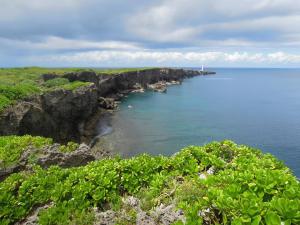
Image may be NSFW.
Clik here to view.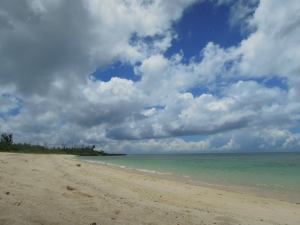
Image may be NSFW.
Clik here to view.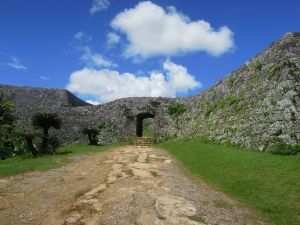
From Yomitan I took the bus back to Naha, it was getting insanely hot and I’d had enough sun, but I stopped off briefly at Mihama American Village on the return journey. I had hoped to find some decent clothes shop but found a really tacky complex. Apparently supposed to help American servicemen feel closer to home and to provide a themed tourist attraction for Japanese tourists I couldn’t help but feel they had missed the mark for both. Imagine the English trying to make a Japanese theme park without ever visiting Japan, full of cliches and sub-par food outlets, this is all of course presuming I’m not overestimating America… My day was pretty average and the only thing to fix it was some of those awesome noodles at Mazemen.
Maybe I was a little affected by the previous days disappointments but the final two days were quite mundane in that I found little motivation to do anything. I would have liked to have visited the northern area of Okinawa but I lacked the motivation to endure a long bus ride so I took comfort in being lazy and enjoying some of the good things I had already done around Naha. Maybe it was the product of the last six months or possibly overdoing it in the high summer sun over the last week or so.
Image may be NSFW.
Clik here to view.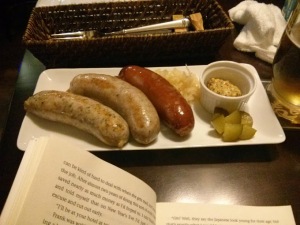
I ate some amazing sausages at a little bar called Baku in a back alley and I spent my last evening in Afronest with another generous portion of jerk chicken. Cultural activities included a visit to the Okinawan Prefectural Museum where I learnt about the history of the Ryukyu Islands and the suffering experienced during the American invasion in 1945 and an hour spent book shopping in the Junkudo Book Store picking up some books by Haruki Murakami and another Japanese author.
That was that and my time in Okinawa prefecture had come to a timely conclusion. On reflection I feel that I missed out on some experiences that were out there but my blase attitude to planning had cost me on this occasion when on other trips it has been to my benefit. That being said, the time I spent in the Yaeyama Islands was right up there as one of my best traveling experiences. I would have loved to visit the Kerama Islands, and if you want to as well, heed my advice and pre-book online!